llistat de metadades
Author
Director
Pruneri, Valerio
Codirector
Terborg, Roland Alfonso
Date of defense
2024-07-23
Pages
141 p.
Department/Institute
Universitat Politècnica de Catalunya. Institut de Ciències Fotòniques
Doctorate programs
DOCTORAT EN FOTÒNICA (Pla 2013)
Abstract
(English) As the world moves towards increasingly miniaturized and complex technologies and devices, the need for imaging and metrology tools for precise material characterization and fabrication process control is rising accordingly. For highly transparent and ultra-thin structures and samples (e.g., optical coatings, lithographic structures or biological cells), intensity-based imaging techniques fall short due to insufficient contrast, as well as failing to provide quantitative information. To overcome these limitations, the field of phase imaging, based on superposition and interference of light, has emerged. In order to create image contrast, phase imaging does not leverage changes in intensity, but rather, as the name implies, changes in the phase of the electro-magnetic wave. With a long-standing history, and Nobel prizes awarded in 1953 to Zernike’s “phase contrast microscope” and 1971 to Gabor’s holographic methods, the field has evolved to “quantitative phase imaging” (QPI), using sophisticated methods and setups to control and manipulate the state of light in order to recover the phase information quantitatively. Herein, the category of “common-path” techniques promises adaptable, compact, robust, and cost-efficient imaging devices, enabling use in industrial applications outside of a well-controlled lab environment. In this thesis, we will describe the development and technological innovations of a “common-path” phase imaging platform based on the “lateral-shearing interferometric microscopy” (LIM) technology. We will implement and adapt the platform to various optical setups, e.g., for large-area lens-free imaging and for high-resolution microscopic imaging. We will also demonstrate the performance and versatility of the platform by exploring a range of applications, with a focus given to material science and manufacturing. Specifically, we will perform volumetric imaging of the tiniest femtosecond laser-written refractive index (RI) changes inside glass. This is followed by the characterization of semi-transparent ultra-thin gold films using multispectral intensity and phase imaging, enabling us to determine the complex RIs of the films of varying thickness. Lastly, we will apply the platform to the imaging of curing grades and RI changes in photopolymers, such as those used in resin-based 3D printing. Further applications of the platform could include surface metrology, imaging of 2D materials, as well as quantitative phase imaging for bio- and cell-imaging applications, with the possibility of integrating the whole platform into a compact add-on which could be added to any commercial microscope. In summary, this thesis will make evident the significant potential of phase imaging in both research and industrial settings, enabled by the proposed compact phase imaging platform. The work builds the foundation for future innovations and developments with a potentially lasting impact on the photonics industry.
(Català) A mesura que el món avança cap a tecnologies i dispositius cada vegada més miniaturitzats i complexos, la necessitat d'eines d'imatge i metrologia per a la caracterització precisa de materials i el control del procés de fabricació està augmentant en conseqüència. Per a estructures i mostres altament transparents i ultrafines (per exemple, recobriments òptics, estructures litogràfiques o cèl·lules biològiques), les tècniques d'imatge basades en la intensitat es queden curtes a causa del contrast insuficient, així com per no proporcionar informació quantitativa. Per superar aquestes limitacions, ha sorgit el camp de la imatge de fase, basat en la superposició i la interferència de la llum. Per tal de crear contrast d'imatge, les imatges de fase no aprofiten els canvis d'intensitat, sinó més aviat, com el seu nom indica, els canvis en la fase de l'ona electromagnètica. Amb una llarga trajectòria, i premis Nobel atorgats el 1953 al "microscopi de contrast en fase" de Zernike i 1971 als mètodes hologràfics de Gabor, el camp ha evolucionat a "imatge de fase quantitativa" (QPI, de l’anglès “quantitative phase imaging”), utilitzant mètodes i configuracions sofisticats per controlar i manipular l'estat de la llum per tal de recuperar la informació de fase quantitativament. En aquest sentit, la categoria de tècniques de “camí comú” (“common-path” en anglès) prometen dispositius d'imatge adaptables, compactes, robustos ieconòmiques, que permeten l'ús en aplicacions industrials fora d'un entorn de laboratori ben controlat. En aquesta tesi, descriurem el desenvolupament i les innovacions tecnològiques d'una plataforma d'imatge de fase “common-path” basada en la tecnologia “lateral-shearing interferometric microscopy” (LIM). Implementarem i adaptarem la plataforma a diverses configuracions òptiques, per exemple, la generació d’imatges d’una área gran sense l’ús de lents i la generació imatges microscòpiques d'alta resolució. També demostrarem el rendiment i la versatilitat de la plataforma explorant diferents aplicacions, amb un enfocament a la ciència de materials i la fabricació. En concret, realitzarem imatges volumètriques dels canvis més petits de l'índex de refracció (RI, de l’anglès “refractive index”) escrits per làser de femtosegon dins del vidre. A continuació, es caracteritzará pel·lícules semitransparents d'or ultrafina, utilitzant imatges multiespectrals d'intensitat i fase, que ens permetran determinar el RI complex de pel·lícules amb diferent gruix. Per últim, aplicarem la plataforma a la imatge de graus de curat i canvis RI en fotopolímers, com els que s'utilitzen en impressió 3D basada en resina. Altres aplicacions de la plataforma podrien incloure metrologia de superfície, imatges de materials 2D, així com imatges quantitatives de fase per a aplicacions en biologia i en imatge cel·lular, amb la possibilitat d'integrar tota la plataforma en un complement compacte que es podria afegir a qualsevol microscopi comercial. En resum, aquesta tesi posarà de manifest el significatiu potencial de la imatge en fase tant en entorns de recerca com industrials, possible gràcies a la compacta plataforma d'imatge en fase proposada. El treball construeix les bases per a futures innovacions i desenvolupaments amb un impacte potencialment durador en la indústria de la fotònica.
Subjects
535 - Òptica; 621.3 - Enginyeria elèctrica. Electrotècnia. Telecomunicacions
Knowledge Area
Àrees temàtiques de la UPC::Enginyeria de la telecomunicació; Àrees temàtiques de la UPC::Física



